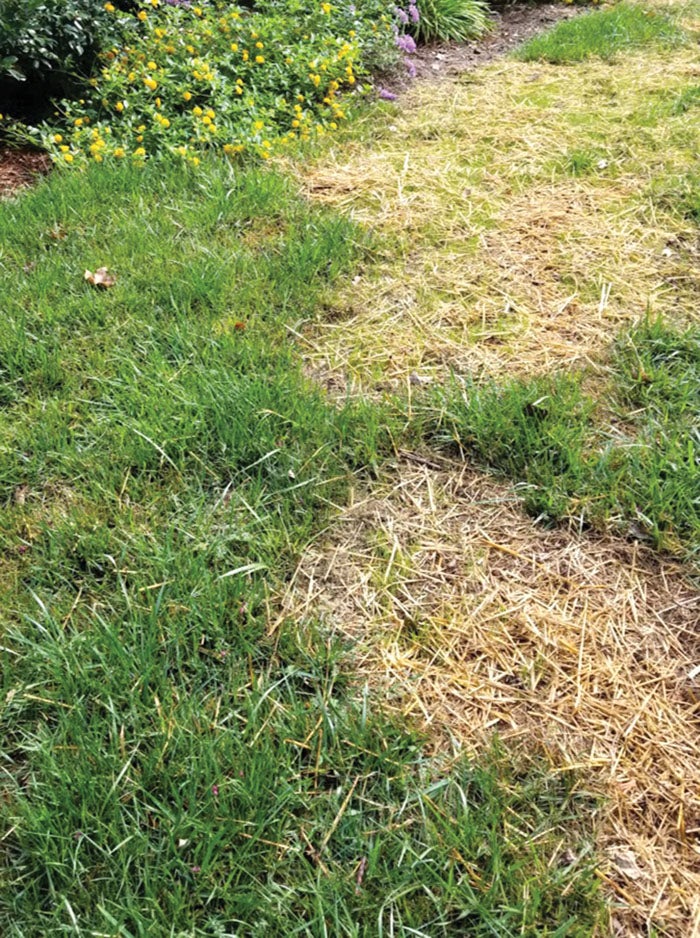Here’s what can go wrong with your lawn
Published 12:00 am Friday, September 13, 2019

- Submitted photo Newly seeded fescue can cover up bare patches in the lawn.
Lawn care and renovation seems to be a challenge with our recent excessively hot and dry weather conditions. Some make lawn makeovers an annual chore due to simple mistakes. Below are mistakes that seem to haunt us all when we renovate our lawns.
Cool season turf growth habits — Fescue and fescue/bluegrass blends grow best in fall and in early spring. One must understand growth habits of fescue and other cool season grasses to grow them correctly.
Improper measurements — Most homeowners guess when questioned about the size of their lawn area. The most common answer is their yard is about half an acre. It is impossible to determine the correct amount of seed, fertilizer or lime if you don’t know the size of the lawn area. The most common mistake is to over-apply seed and under-apply fertilizer.
No soil test — Most people guess when applying fertilizers, especially lime. Soil test information allows homeowners the ability to accurately apply lime and fertilizer rates required for specific plants, including fescue. Applying lime each year as a standard practice will often raise the pH to unacceptable levels for fescue growth. Over-liming can be a serious problem. This is a service provided by the North Carolina Department of Agriculture.
Poor mowing practices — Some homeowners mow their fescue lawns too close. Three and half inches high is normal height for fescue lawns. Dull blades can make a beautiful lawn ugly and sharp blades can make a fair lawn look great. Most homeowners have never sharpened their mower blades. Blades need to be sharpened about once a month during the growing season.
Inconsistent maintenance — Fescue lawns respond best to consistent maintenance in the spring and fall. If there is one aspect of lawn care that will make your lawn look best it is consistent care, especially fertilization and weed control. Those who chose not to be consistent will have poor lawns.
Water — One to two inches a week in most instances is enough for fescue lawns. Shallow watering or over-watering can be a problem. Watering at night aggravates fungal disease problems.
Wrong seed — Some think if you blend annual ryegrass with fescue, it helps establish fescue. Ryegrass is a fierce competitor with fescue and bluegrass and will weaken the stand. Never blend annual bluegrass with fescue or fescue/bluegrass blends. Contractor blends contain ryegrass. Read the label on these blends before sowing an unknown blend.
Poor weed control — Most homeowners get confused trying to use herbicides for weed control. Homeowners need to focus more on why they have weeds rather than how to control them. A healthy lawn will have few weeds.




